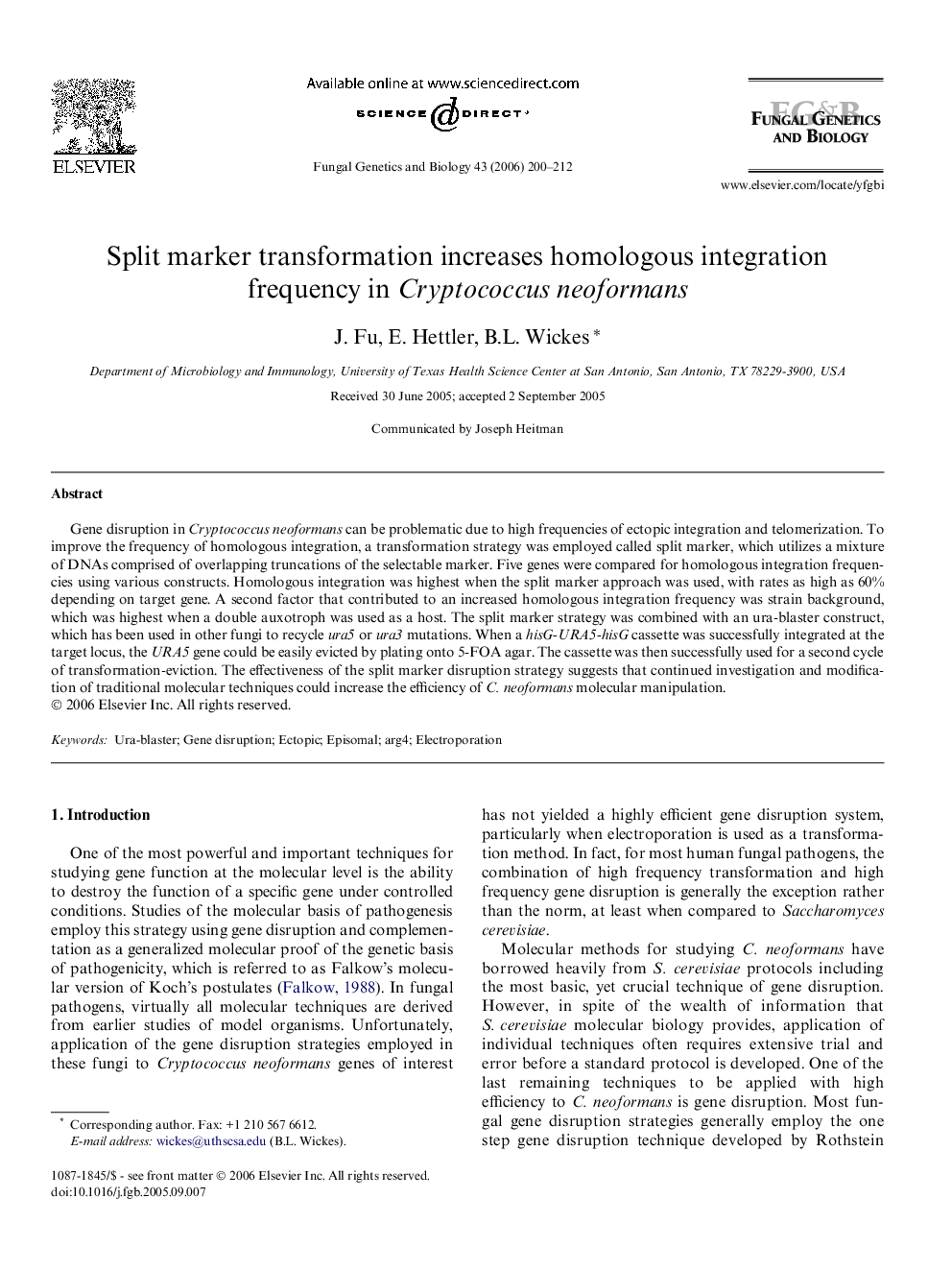| Article ID | Journal | Published Year | Pages | File Type |
|---|---|---|---|---|
| 2181632 | Fungal Genetics and Biology | 2006 | 13 Pages |
Gene disruption in Cryptococcus neoformans can be problematic due to high frequencies of ectopic integration and telomerization. To improve the frequency of homologous integration, a transformation strategy was employed called split marker, which utilizes a mixture of DNAs comprised of overlapping truncations of the selectable marker. Five genes were compared for homologous integration frequencies using various constructs. Homologous integration was highest when the split marker approach was used, with rates as high as 60% depending on target gene. A second factor that contributed to an increased homologous integration frequency was strain background, which was highest when a double auxotroph was used as a host. The split marker strategy was combined with an ura-blaster construct, which has been used in other fungi to recycle ura5 or ura3 mutations. When a hisG-URA5-hisG cassette was successfully integrated at the target locus, the URA5 gene could be easily evicted by plating onto 5-FOA agar. The cassette was then successfully used for a second cycle of transformation-eviction. The effectiveness of the split marker disruption strategy suggests that continued investigation and modification of traditional molecular techniques could increase the efficiency of C. neoformans molecular manipulation.
